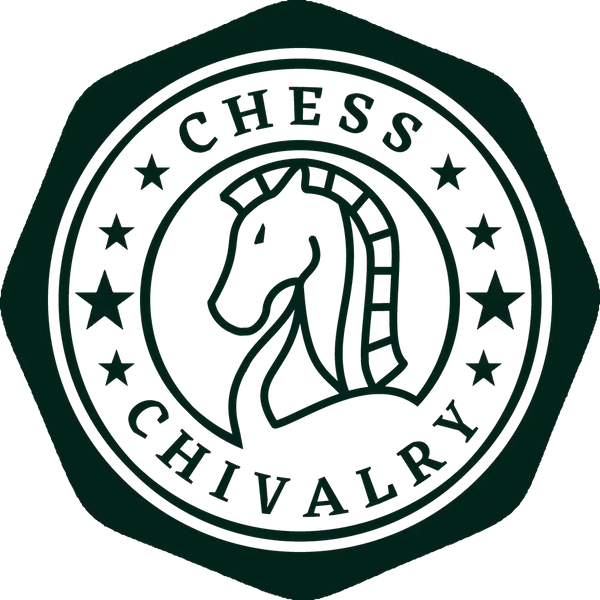
Chess & History: The Staunton Chess Pieces
Share
The Staunton chess piece design, which is now widespread all over the world, originated in England in 1849. In the mid-19th century, common chess pieces had elaborate hand-carved ornaments and were highly decorative. This art form made chess pieces a valuable and thus also highly priced pleasure in which only wealthy citizens could participate. Players, on the other hand, who attached more importance to the handling of the pieces, complained that they were fragile, often difficult to distinguish from one another and unwieldy to move on the chessboard. The decorative properties of the pieces prevented them from being suitable for use as competitive pieces, as a good grip had to give way to aesthetics.
Names of Some of the Chess Piece Designs of the Time
- Barleycorn
- Calvert
- Edinburgh
- Isle of Lewis
- Lund
- Merrifield
- Saint George
- Selenius

Barleycorn chess pieces from the early 19th century
However, as chess remained popular at the tournament level, the demand for more competitive and robust chess equipment increased. Entrepreneur Nathaniel Cook saw the business potential and applied for a patent on a chess piece design created by John Jaques in the spring of 1849. Jaques was also a businessman and very experienced in the field of ivory turning, which is why the complaints of the chess players had also reached his ears. He transferred his talent and experience in working with ivory to woodworking to create a chess piece design that had simpler shapes and was easier to produce. To promote the chessmen, Cook enlisted the strongest chess player in the world at the time for his venture: Howard Staunton. He signed the certificates of authenticity for the chess piece sets and helped the pieces achieve a breakthrough with his naming. In addition, Staunton himself was very committed to using his fame to praise the chess pieces named after him beyond all measure, while always denigrating other pieces on the market.

Staunton Design Chess Pieces c. 1853
Due to the cheaper production costs and lower prices as well as the resulting wider availability, Staunton chess pieces became famous worldwide and also helped chess as a game to become even more popular. In 1924, even the World Chess Federation FIDE officially chose Staunton chessmen as the tournament standard for all future chess competitions. Since Staunten chess pieces come in a wide variety, there are some characteristics that allow identification of the design styles. These have both a historical and symbolic background, which is expressed in the appearance of the individual pieces.
The Chess Pieces and their Social Status
The design of the Staunton chess pieces is closely based on the neoclassical architecture that became popular from the middle of the 18th century. For this reason, the pieces appear statuesque and bear a strong resemblance to historical scenes of ancient building facades. Moreover, since many architects of the time drew their inspiration for the neoclassical movement from Greek and Roman architectural styles, the origin of the Staunton design can be traced back to these eras. With the exception of the pawns, the symbolism of the individual pieces is aimed at the elevated society of the Victorian era and is meant to symbolise political as well as social dignitaries. This personification is also a major reason for the popularity of chess. Every chess player, regardless of his status or background, should be able to recognise and interpret the social structures in the game. But how do you depict a social status or a political area of responsibility in a wooden piece? In addition, in a form that is as simple as possible and cheap to produce? For the design of the Staunton chess pieces, Jaques and Cook reinterpreted existing piece designs on the market, minimising their ornamentation while placing greater emphasis on the features with the greatest power of differentiation. The chess pieces no longer stood on pillars, but instead had a broader, more stable base. Towards the top, the pieces usually became somewhat narrower in order to make them easier to grasp and guide. In addition, each piece had individual characteristics, which I would like to explain in the following.
The Design and Social Status of the King
The king is the most important and at the same time the most helpless chess piece on the board. This is reflected above all in his movement pattern, which is only very limited and if so, then only promising with the support of his subordinates. He presents himself in his eponymous role as king and accordingly uses as symbolism the shape of a crown with a cross reaching upwards. This is intended to emphasise the bond between the monarchy and Christianity, which in turn is historically based on the legitimisation of the monarchy through the divine grace. The king also represents the largest figure on the field and its height is used as a measure of proportion for the size of the chess piece set.
The Design and Social Status of the Queen
Although the woman had considerably fewer rights than the man at the time, it was the queen who became the most powerful piece on the chessboard. However, she did not always hold this position of power. It was not until the Middle Ages around the year 1490 that her rules were strengthened, most likely due to the large number of queens in power at that time. Before that, the queen was only allowed to use a weakened movement pattern of the bishop - one square in one of the diagonal directions. Similar to the king, she is distinguished by her headgear. She wears a tiara, which distinguishes her from the king's appearance and his royal crown by outwardly protruding spikes. In addition, she is somewhat smaller than the king and appears narrower and more elegant in her shapes. Some Staunton variants add a rose-like bulge to the tiara, which emphasises femininity and is intended to appear somewhat more precious. Although not common at tournament level, Staunton chess piece sets are increasingly being sold with additional queens to represent a second queen on the chessboard in the event of a pawn promotion.

The first rule adjustments to the queen were made
during the reign of Isabella I of Castile (bottom right)
The Design and Social Status of the Rook
The rook embodies the foundations of a society and both rooks in combination symbolise a wall along the line of a chessboard that is difficult to breach. It has no special ornamentation, but its simple and massive form exudes security and intransigence. Since he is the only chess piece that represents a structure, his appearance also clearly expresses the neoclassical architecture described at the beginning, while other chess pieces draw their embodiment from the hierarchical differentiation of the society.
The Design and Social Status of the Bishop
The design of the bishop is modelled after the headgear of a bishop. This so-called mitre bears a lace-like and double-horned shape which, according to Erasmus of Rotterdam, is supposed to symbolise "[...] the uniformly perfect knowledge of the Old and New Testaments". In the finishing of the chess piece, the mitre is depicted with a notch protruding into the head of the piece from above. Through this symbolism, the piece design is intended to represent the spirituality and the faith in a society or a kingdom. The bishop's function as an advisor can be interpreted in chess by his starting position right next to the king and queen. And since several advisors can also represent different opinions, it is also not surprising that the bishops always move on differently coloured squares.

The design of the bishop is based on the mitre
The Design and Social Status of the Knight
The most characteristic chess piece in a chess set is the knight. This is mainly due to the fact that its shape is the only one that is not turned axially symmetrical, but is elaborately carved by hand. The representation of the knight follows a horse, more precisely that of a stallion. Through this, the virtue of chivalry is to be expressed and a connection to the cavalry anchored in chivalry is to be created. The design origin of this stallion lies in the preserved marble statues of Greek stone sculpture, such as those that were common on the Parthenon marbles in the British Museum in London and still are today. The military strategic and military tactical orientation of the knight's stand, on the other hand, is represented by the complex movement pattern of the knight. He does not move in one direction but jumps in an L-pattern and can also jump over pieces. Both the pattern itself and the characteristic of not being able to be blocked by enemy pieces and only by allied pieces on the target square symbolise the military element of surprise.

Image of two horsemen on the Elgin Marbles
The Design and Social Status of the Pawn
The design of the pawn is very simple and is defined by its round head on a cone-like body. His appearance bears a strong resemblance to the architecture of round towers from the Victorian era, but there is no direct evidence of a connection. Little is also known about the symbolism of the pawn in a social context. However, a comparison with the other chess pieces shows that the social position of all other pieces can be derived from the design of their head shapes. This is not the case with the pawn, as the spherical shape is kept neutral and does not show any indication of a social sphere of responsibility or a specific role. However, since pawns in chess at that time had the status of an immolation and were always drawn into the attack, the pawn's free and neutral head shape can be interpreted as symbolising its lower status and replaceability. With the increasingly strategic way of thinking in chess, a way of playing has also developed that appreciates the value of the pawn more and in a sense softens the imagery of the subordinate. Today, pawns are the essential structural elements on a chessboard. They are not drawn into the attack heedlessly as a sacrifice, but in most games are held for the long term in order to be able to focus attacks and break through the opponent's defence in the endgame. This brings out a beautiful irony: Although chess is called the game of kings, the hierarchical structures on which a kingdom is based are precisely those that have been expressed less and less through the way the game is played in the course of chess history. Chess has reached a point where no chess player can afford not to give his pawns the same attention as his king.
I hope I have been able to give you a good overview and some interesting insights about the Staunton chess pieces and some historical background.
If you are interested in buying a Staunton set, please have a look at my selection of Staunton chess sets and Statunon chess pieces.
I wish you a lot of fun with the game, a lot of success and quick progress in your learning.
See you soon.
Stefan
